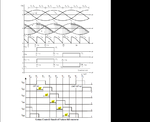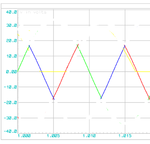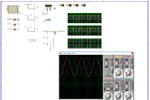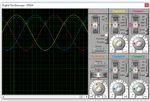Okada
Banned
My question is Three Phase Fully Controlled Rectifier Design related.
I am doing only the simulation in Proteus. I am using three phase AC voltage source. I want to know,
1. Is it good to use one ZCD circuit for say Phase R and then fire the first SCR pair at alphs (firing angle) and then fire the successive SCR pairs with a 60 degree (50 Hz AC, 3.33ms) difference or 3.33ms difference from the previous trigger time. I can detect ZC using INT pin and then disable it and then run a timer interrupt of (alpha delay) and then fire First SCR pair and then I run 3.33ms (60 degrees) timer interrupt and use a counter and increment it on each timer interrupt and firing successive SCR pairs and finally after all the SCR pairs are fired I will clear the counter and re-enable the INT pin ?
2. Use three ZCD circuits, one for each phase and fire the SCR pairs.
The 1st method doesn't allow me to detect phase failure but the second one allows.
I am referring this.
**broken link removed**
I am doing only the simulation in Proteus. I am using three phase AC voltage source. I want to know,
1. Is it good to use one ZCD circuit for say Phase R and then fire the first SCR pair at alphs (firing angle) and then fire the successive SCR pairs with a 60 degree (50 Hz AC, 3.33ms) difference or 3.33ms difference from the previous trigger time. I can detect ZC using INT pin and then disable it and then run a timer interrupt of (alpha delay) and then fire First SCR pair and then I run 3.33ms (60 degrees) timer interrupt and use a counter and increment it on each timer interrupt and firing successive SCR pairs and finally after all the SCR pairs are fired I will clear the counter and re-enable the INT pin ?
2. Use three ZCD circuits, one for each phase and fire the SCR pairs.
The 1st method doesn't allow me to detect phase failure but the second one allows.
I am referring this.
**broken link removed**
Attachments
Last edited:






